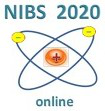Speaker
Description
Good understanding of negative ion beam optics is crucial to the development of the ITER NBI system. The Large Helical Device (LHD) has such a negative ion beam. Recently, an unexplained splitting of the beam in the horizontal, but not the vertical, direction has been observed in the emittance diagram. This indicates a large influence of the plasma meniscus on the negative ion beam optics. As part of a larger set of parametric sweeps, a scan of the beam source arc power has been carried out inside the NIFS Neutral Beam Test Stand (NIFS-NBTS), while a Pepper-pot-type phase space analyser (PPSA) has been used to characterize the beam in six-dimensional position-momentum phase space. In this way, the effect of varying the beam source condition on the optics of the beam downstream is investigated. Numerical simulations of beam particle trajectories are carried out based on the phase space measurements to obtain beam intensity profiles and phase space structures (PSSs) at the location of the plasma meniscus. This provides a first step in understanding meniscus structure and formation and its influence on the extracted beam.
Analysis of the PSS observed in the experiment indicates that different beam sub-components after splitting originate from different physical locations on the meniscus. The results motivate further research into negative ion plasma and plasma meniscus modeling and into negative ion beam focusing.
Summary
Unexplained observed splitting of the phase-space structure of the LHD negative ion NBI precursor beam has motivated numerical beam particle trajectory calculation to analyze the beam phase space structure at its origin, the plasma meniscus. Results confirm the splitting at the source, the origin of which is still up for debate.

